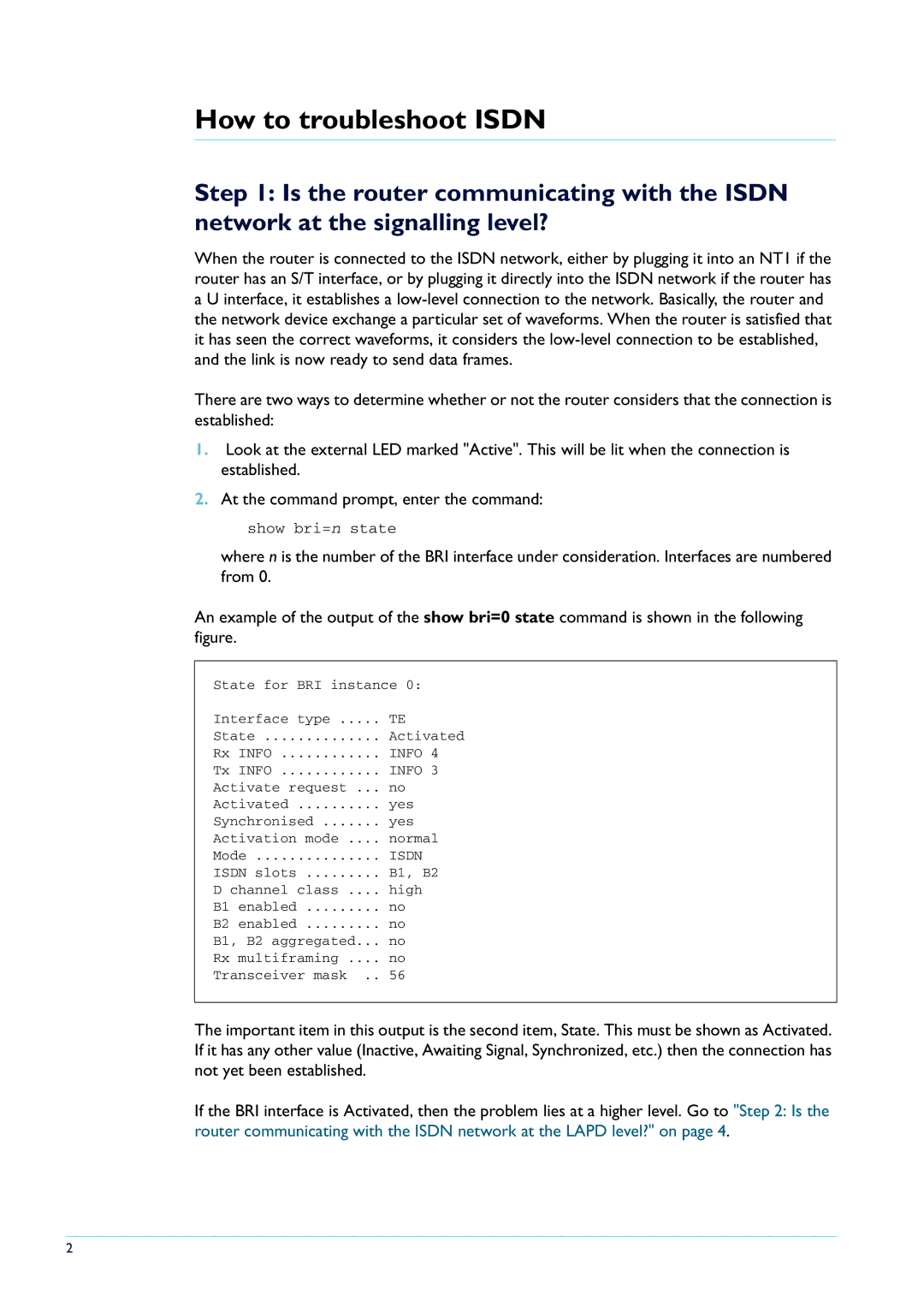
How to troubleshoot ISDN
Step 1: Is the router communicating with the ISDN network at the signalling level?
When the router is connected to the ISDN network, either by plugging it into an NT1 if the router has an S/T interface, or by plugging it directly into the ISDN network if the router has a U interface, it establishes a
There are two ways to determine whether or not the router considers that the connection is established:
1.Look at the external LED marked "Active". This will be lit when the connection is established.
2.At the command prompt, enter the command:
show bri=n state
where n is the number of the BRI interface under consideration. Interfaces are numbered from 0.
An example of the output of the show bri=0 state command is shown in the following figure.
State for BRI instance 0:
Interface type | TE |
State | Activated |
Rx INFO | INFO 4 |
Tx INFO | INFO 3 |
Activate request ... | no |
Activated | yes |
Synchronised | yes |
Activation mode .... | normal |
Mode | ISDN |
ISDN slots | B1, B2 |
D channel class .... | high |
B1 enabled | no |
B2 enabled | no |
B1, B2 aggregated... | no |
Rx multiframing .... | no |
Transceiver mask .. | 56 |
The important item in this output is the second item, State. This must be shown as Activated. If it has any other value (Inactive, Awaiting Signal, Synchronized, etc.) then the connection has not yet been established.
If the BRI interface is Activated, then the problem lies at a higher level. Go to "Step 2: Is the router communicating with the ISDN network at the LAPD level?" on page 4.
2
